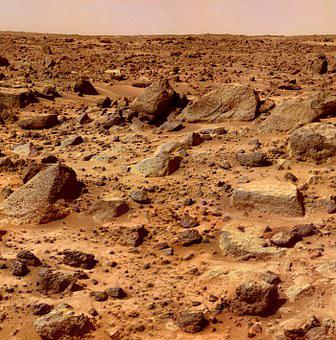Mars is one of the most well-known planets in the Solar System, thanks in part to its distinctive hue. Despite its insignificance in the big scheme of things, our Solar System is a fascinating place to visit. It is home to eight different planets, each with its own distinct features. Jupiter is a gigantic gas giant with beautiful rings, and Earth is the only planet known to have life. After that, there’s Mars. Mars is the fourth planet from the Sun and one of Earth’s closest neighbours. Mars is one of the most interesting planets in the Solar System, owing to humanity’s curiosity about the possibility of discovering life there. Evidence of water and carbon molecules has been discovered on Mars, bolstering the theory that life previously lived there. It’s a riddle that might take years to unravel, but it’s still one of the most intriguing aspects of space research.
Another well-known feature of Mars is its hue. Earth’s colour is a blend of green and blue, Venus’s is a pale yellow, and Neptune’s is a deep blue. When it comes to Mars, the planet’s hue is a bright red. The planet exhibits a mix of red, orange, and brown tones, rather than being consistently red. There are also areas of Mars that are completely white. Its crimson look, on the other hand, is the most noticeable. After all, there’s a reason Mars is known as the “Red Planet.”
Why Is Mars Red?
As a result, Mars is red. That’s a simple enough explanation. But why is Mars so brightly coloured? It all has to do with the constitution of the planet. Iron is abundant in many of Mars’ rocks. On Mars, the same thing happens as it does on Earth when iron remains outside for too long and rusts due to iron oxidation. Because iron-rich rocks dominate much of Mars’ surface, the planet appears red from afar.
Visitors to Mars, on the other hand, will notice that the red colour is considerably more subdued in person. The majority of the rust that forms when the rocks oxidize and create rust is caught in Mars’ thin atmosphere above the surface. From afar, the red hue is evident, yet standing on Mars’ surface, the Red Planet seems considerably more orange, tan, and brown. Because you’d be standing on Mars, instead of staring at its crimson atmosphere from millions of kilometres away, you’d be looking at all of its old rocks.
In short, while Mars is primarily a red planet, that’s not the only colour present there. This is often the case with many things in the universe. The Moon, for example, appears to be grey and nothing more. In reality, parts of our lunar neighbour have faint sections of red and blue. There’s always more than meets the eye with outer space, and in the case of Mars’ colour, it’s no different.
Scientifically
Overall, Mars is red due to the presence of hematite, a red type of ferric oxide. Although ferric oxides are present in many areas on Mars, only hematite is responsible for the red hue, and the microscopic dust particles hanging in the atmosphere and coating the top few millimetres to meters of the planet’s surface are entirely responsible for the red colour we observe. You’d think that if we could quiet the atmosphere for lengthy periods of time and let the Martian dust settle out, Rayleigh scattering would take over, rendering the skies blue as it does on Earth.
The sky would seem exceedingly dark: almost entirely black, with a tiny bluish hue, since the Martian atmosphere is so thin and fragile. Even during the day, if you could effectively block out the planet’s surface brightness, you’d be able to see certain stars and up to six planets – Mercury, Venus, Earth, Jupiter, Saturn, and occasionally Uranus. Although Mars is known as the “Red Planet,” just a small portion of it is genuinely red. Fortunately for us, the red component of its surface is the outermost layer, which is widespread in the Martian atmosphere and accounts for the colour we see.






